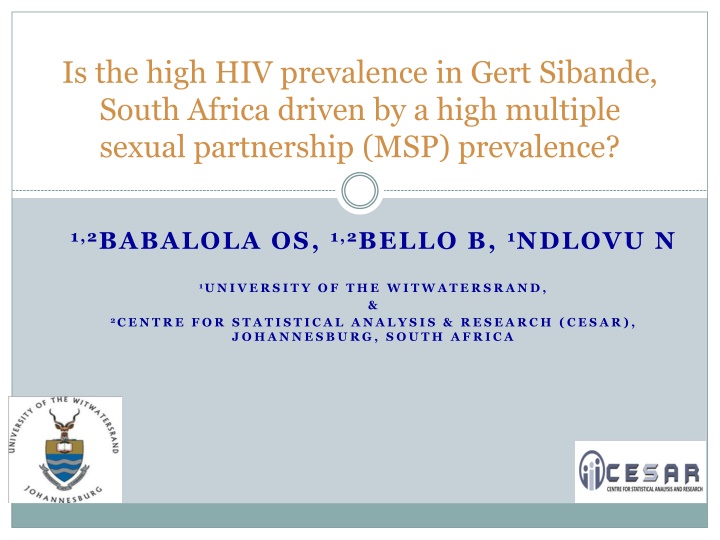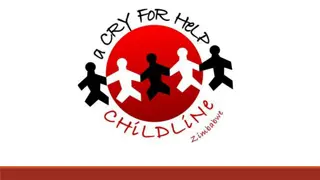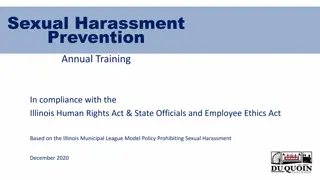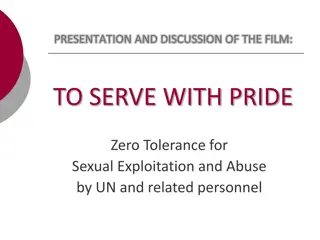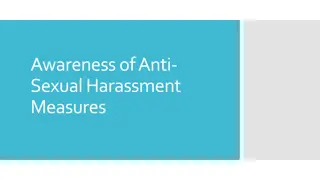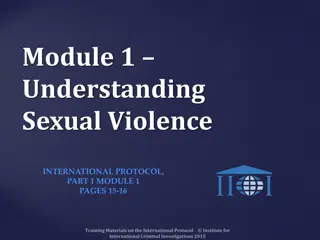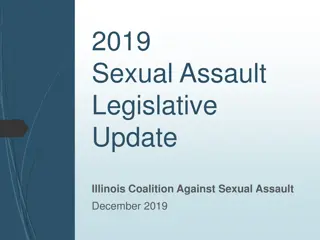Factors Associated with Multiple Sexual Partnerships in Gert Sibande, South Africa
This study examines the prevalence of multiple sexual partnerships in Gert Sibande, South Africa, and identifies factors associated with this behavior among adults aged 16-55. Through secondary data analysis and logistic regression, the research sheds light on the impact of multiple and concurrent sexual partnerships on the high HIV prevalence in the region.
Uploaded on Apr 16, 2025 | 1 Views
Download Presentation

Please find below an Image/Link to download the presentation.
The content on the website is provided AS IS for your information and personal use only. It may not be sold, licensed, or shared on other websites without obtaining consent from the author.If you encounter any issues during the download, it is possible that the publisher has removed the file from their server.
You are allowed to download the files provided on this website for personal or commercial use, subject to the condition that they are used lawfully. All files are the property of their respective owners.
The content on the website is provided AS IS for your information and personal use only. It may not be sold, licensed, or shared on other websites without obtaining consent from the author.
E N D
Presentation Transcript
Is the high HIV prevalence in Gert Sibande, South Africa driven by a high multiple sexual partnership (MSP) prevalence? 1,2BABALOLA OS, 1,2BELLO B, 1NDLOVU N 1U N I V E R S I T Y O F T H E W I T W A T E R S R A N D , & 2C E N T R E F O R S T A T I S T I C A L A N A L Y S I S & R E S E A R C H (C E S A R ) , J O H A N N E S B U R G , S O U T H A F R I C A
Gert Sibande District (GSD) According to the annual HIV prevalence, GSD HIV prevalence ranked from 3rd (40.5% - 2008) to 1st (46.1% - 2011) of 52 Districts in SA South Africa (SA) Consistently higher HIV prevalence in GSD than national and provincial HIV averages MSP and Concurrent Partnerships (CSP) are major determinants of HIV epidemic Mpumalanga Province No study on MSP and CSP carried out in GSD Gert Sibande
Two-component generalised HIV epidemics A sexual epidemic necessarily depends on multiple partnering. Component 2: Slow Component 1: Rapid Multiple partnering (especially concurrency and largely acute infection) Long-term discordant partnerships MSP and Concurrent Partnerships (CSP) are major determinants of HIV epidemic ~2/3 of new infections ~1/3 of new infections From: Shelton JD. A tale of two-component generalised HIV epidemics. The Lancet. 2010; 375:964-966
Main Objectives To estimate the prevalence of multiple and concurrent sexual partnerships (past 12 months) To identify the factors associated with MSP among adults (16-55 years) of GSD
Study Design Secondary data analysis Gert Sibande District Cross-sectional, multi- staged cluster sampling method 7 Municipalities: 30 Enumeration Areas (EAs)/Primary Sampling Unit (PSU) Probability proportionate to size (PPS); that is, self- weighted sampling 25 Households/Secondary Sampling Units (SSU) from each EA Multivariate logistic regression of a binomial distribution with results reported as adjusted odds ratios (AOR) and 95% confidence intervals (CI). From 750 households: 750 Respondents (Female=500) 592 sexually active adults, aged 16 55 (Female=392)
Measures and analysis Standardized scale of measurement Outcome measures MSP (past 12 months): two or more sexual partners, past 12 months CSP: occurs when sexual intercourse with one partner occurs between two acts of intercourse with another partner (UNAIDS 2009). Exposure variables Socio-demographics (age, education, employment status, socio-economic and marital status) Sexual behavioural (age at first sex, condom use at last sex, transactional sex, sex under influence of alcohol) 1) 2)
Types of Concurrent Partnerships Expectation of affection, commitment and support Ongoing (main partner), (co-wife, mistress, small house ) Intermittent or occasional (co-parents, location dependent relationships, little girlfriends ) One-off (sex-worker, casual encounter, take- aways , local bicycles ) Duration of partnership Jan Dec From: S. Leclerc-Madlala (2008) Age-disparate and intergeneration sex in southern Africa: the dynamics of hypervulnerability. AIDS, 22 (supp 4): 1-9.
Prevalence of MSP and CSP is higher among males 50 44 45 40 35 30 Percentage 25 22 20 20 15 11 10 8 5 3 0 Male Female Total 12-Month MSP***(p<0.001) CSP***(p<0.001)
Factors of MSP and CSP Females Males Young people Socio-economic status Never married Age at first sex (<16) Condom use at last sex Sex under the influence of alcohol Never married Transactional sex Condom use at last sex Sex under the influence of alcohol
Prevalence of MSP and CSP is highest among young people 70 60 57 50 47 43 43 40 Percentage 33 30 20 20 16 14 13 12 12 10 9 9 10 7 6 5 1 0 Age group 16-19 20-24 25-29 30-34 35-44 45-55 Male MSP* (p<0.05) Female MSP CSP* (p<0.05)
Multivariate Models (MSP only) Three multivariate sex-differentiated models were built. Variables significant at p<0.05 were retained in the final models which contained: Two socio-demographic and three sexual behavioural factors in males One socio-demographic and three sexual behavioural factors in females
Multivariate Models 1 Socio-demographic (Males: N=200) Socio-demographic (Females: N=392) MULTIVARIATE VARIABLES MULTIVARIATE VARIABLES AOR ( 95% CI) AOR ( 95% CI) Age group 16 19 20 24 25 29 30 34 35 44 45 55 Socio-economic status High Intermediate Low 3.8 (1.2 12.2)* 5.2 (2.0 - 13.5)*** 3.5 (1.2 10.2)* 3.2 (1.3 7.2)* 2.4 (0.6 2.7) Ref Marital status Ever married Ref Never married 8.5 (1.1 64.0)* *p 0.05 **p 0.01 ***p 0.001 AOR: Adjusted odds ratios, adjusting for other variables in the model Ref 2.6 (1.5 4.6)*** 1.3 (0.6 2.7)
Multivariate Models 2 Sexual behavioural (Females: N=392) Sexual behavioural (Males: N=200) VARIABLES MULTIVARIATE VARIABLES MULTIVARIATE AOR ( 95% CI) AOR ( 95% CI) Age at first sex <16 16 19 20+ Condom use at last sex No Yes 10.7 (2.4 33.8)*** 11.8 (3.4 40.3)*** Ref Ref 2.1 (1.1 3.9)* Recent Transactional sex No Yes Recent Transactional sex No Yes Ref 3.2 (1.0 9.5)* Ref 4.9 (1.3 18.2)* Sex while drunk Non drinkers No Yes Ref 1.3 (0.6 -3.0) 4.8 (2.3 9.8)*** Sex while drunk Non drinkers No Yes Ref 1.3 (0.6 2.8) 4.6 (2.1 10.0) *** *p 0.05 **p 0.01 ***p 0.001 AOR: Adjusted odds ratios, adjusting for other variables in the model
Full Multivariate Model (Adjusted for socio- demographic and sexual behavioural) Females: N=392 Males: N=200 VARIABLES MULTIVARIATE VARIABLES MULTIVARIATE AOR ( 95% CI) AOR ( 95% CI) Age group 20 24 45 55 Socio-economic status High Intermediate Age at first sex <16 16 19 20+ Recent Transactional sex No Yes Sex while drunk Non drinkers Yes Marital status Ever married Never married Condom use at last sex No Yes Recent Transactional sex No Yes Sex while drunk Non drinkers No Yes 3.0 (1.0 -9.3)* Ref Ref 10.9 (1.3 90.3)* Ref 3.1 (1.7 5.6)*** Ref 2.4 (1.1 5.6)* 9.0 (2.7 30.1)*** 9.7 (2.3 41.4)** Ref Ref 12.0 (3.9 37.1)*** Ref 2.1 (1.0 -4.2)* 9.3 (4.4 19.6)*** Ref 4.5 (1.3 15.2)* Ref 4.5 (1.9 9.7) *** *p 0.05 **p 0.01 ***p 0.001 AOR: Adjusted odds ratios, adjusting for other variables in the model
What does this research tell us? There is a high prevalence of MSP and CSP among adults of Gert Sibande District compared to levels reported in the SABSSM surveys in South Africa Similar high levels of MSP and CSP were associated with high HIV prevalence in various studies Age, socio-economic factors among males and having never been married among females remained as significant underlying correlates of MSP after adjusting for proximate sexual behavioural factors Age at first sex in males, condom use at last sex among females as well as sex under the influence of alcohol and transactional sex in both males and females remained as significant independent sexual behavioural factors of MSP
How does the findings influence policies and interventions? More work is needed in Gert Sibande to address MSP and CSP. Emphasis on the need for a multi-sectoral approach to address both the structural and contextual risk factors. Sexually active adults, young people and the unmarried, should be strategically targeted. Interventions targeting places where alcohol is served must be built into HIV prevention programmes to address the HIV risk related to alcohol use.
Conclusions and reflections MSP is high in Gert Sibande District High MSP might explain the high HIV prevalence in GSD. Well tailored interventions are needed in Gert Sibande to address enabling factors Understanding of the factors at work in GSD might be a good point in helping to address the epidemic in similarly affected areas
THANK YOU Q & A
